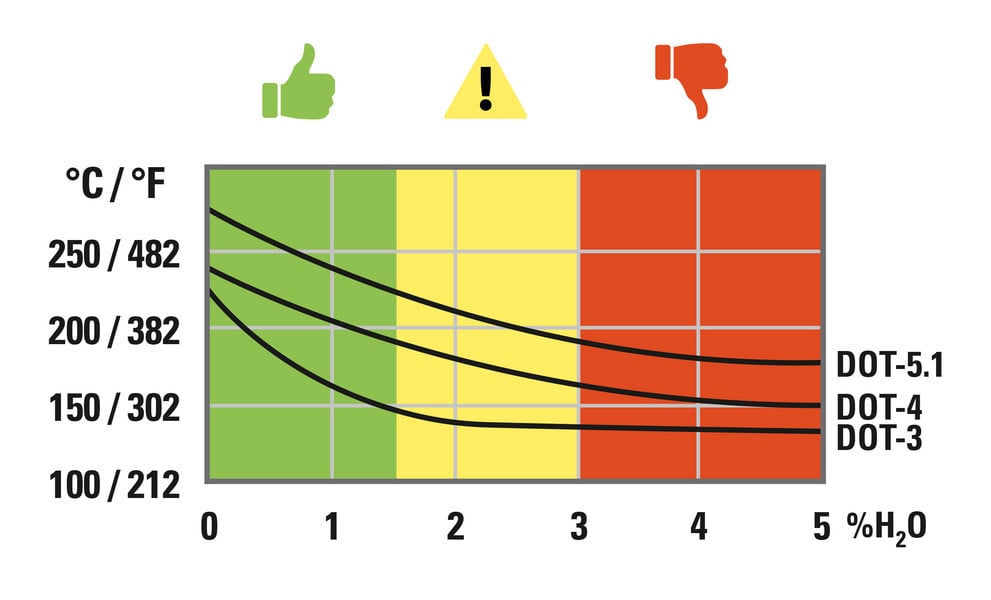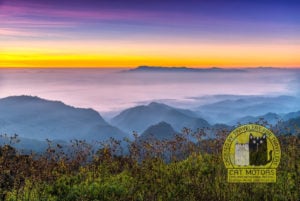Safety Guide for Mountain Roads: Everything About Your Motorcycle’s Braking System
The braking system is the most important safety component on a motorcycle. It may seem simple, but improper use or poor maintenance of the brakes can lead to serious problems, especially in the mountains. Understanding how the brakes work and what can go wrong is already half the battle. This is not just technical knowledge — it is a matter of your life.
Braking Process: What Happens Inside the System
You pull the brake lever. The caliper pistons move out, the pads clamp the disc. Friction stops the wheel — but it also generates heat. A lot of heat.
That heat travels from the disc to the pads, then to the caliper, and finally to the brake fluid. If the fluid is in good condition and you brake correctly, everything works fine. The system does its job.
What Happens During Overheating
Now imagine this: you’re riding downhill and constantly pressing the brake. No breaks. One kilometer, two, five… The fluid gets hotter and hotter until, at some point, it starts to boil.
Brake fluid absorbs moisture from the air like a sponge. Over time, it picks up water — anywhere from 0.5% to 3%. When the main fluid boils, that water boils too. Air bubbles form — first small ones, then bigger and bigger.
The problem is that air compresses, but liquid doesn’t. When there’s air in the system, you pull the lever and, instead of braking, you’re just compressing those bubbles. There’s not enough pressure on the pads. The disc keeps spinning. The brakes don’t work.
That’s how brake failure happens in the mountains — simply because someone didn’t release the brake on a descent.
Brake Fluid Standards
Brake fluid is one of the most important components in motorcycle operation. The chemical composition of the brake fluid should be of the highest quality, since the operation of the entire brake system depends on it.
Brake fluid is manufactured in all countries of the world according to international standards:
1. FMVSS #116. This standard was created by the United States Department of Transportation (USDOT). According to this standard, brake fluid is divided into classes from DOT-1 to DOT-5.
2. SAE J1703 and SAE J1704. These standards were created by the Society of Automotive Engineers (SAE).
In most cases, the American DOT3 and DOT4 standards are used in the production of brake fluid for private vehicles. Their composition differs in chemical additives that affect the boiling point of the brake fluid when it heats up during braking.

Why Disc Brake Fails?
When the brake lever is pulled, the caliper pistons extend, causing the pads to compress the discs. As the pads contact the disc, heat is generated and transferred to the fluid. If the fluid is in good condition and used correctly, it will not boil, and the system will function properly.
If a cyclist uses the brakes improperly and thoughtlessly, especially on long downhill slopes, it can cause the fluid to get very hot and then boil over. Since brake fluid is hygroscopic and absorbs moisture during use, containing 0.5-3% water, when it boils, the water inside also boils.
When this happens, air bubbles appear in the fluid. Gradually, their number and size increase. This vapor arises from the molecules of boiling water.
Since air can be compressed, the fluid becomes compressible once it begins to boil. As a result, when the lever is pulled, the air in the fluid is compressed, but the system does not work because the compressed air cannot apply sufficient force to the caliper to stop the spinning wheel and disc.
This is why disc brakes fail when improperly handled by CVT motorcycles on mountain slopes.
If you’re traveling in Northern Thailand, don’t forget to read our guide about Chiang Mai attractions.
How It Works in Our Company
In order to avoid problems with the braking system, motor bike manufacturers recommend following a number of simple rules:
- It is necessary to periodically check the brake fluid level in the reservoir and promptly replace it. The brake fluid must be changed every two years or when the moisture content of the brake fluid reaches 3% (the higher the moisture content, the worse). In our company, we replace the brake fluid when the moisture content comes 2.5%, but at least once a year.
- Motorcycle manufacturers recommend using DOT3 brake fluid, which has a dry/wet boiling point of 205°C/140°C (the lower the boiling point, the worse). Our company uses DOT4+ brake fluid with a dry/wet boiling point of 300°C/180°C.
- Manufacturers do not recommend using brake fluid from a package that has been opened for more than 6 months. Our company’s maximum shelf life of an open container is 3 months.
Thus, we not only follow the recommendations of the motorbike manufacturers, but also do it a little better.
By following these simple rules, we avoid serious problems that threaten the safety of your traffic:
- brake failure due to excessive moisture content in the brake fluid;
- brake operation with delay due to high viscosity at low temperatures;
- wear of parts of the brake system;
- corrosion of ferrous metals and aluminum alloys in brake system modules;
- violation of the tightness of the brake system
If You Have Never Owned a Motorbike With a CVT
If this article is read by experienced riders who have never used a motorcycle with CVT and do not quite understand the problem of overheating disc brakes, just remember that on a motorcycle with a manual gearbox on mountain slopes, you can use a lower gear, thereby slowing the motorcycle without using the brakes.
But bikes with a CVT do not have a manual transmission and a downshift. A motorbike with a CVT without using the brakes on a long slope accelerates as fast as possible. Therefore, the rider is forced to use the brakes at all times. And if the brakes are used inappropriately, this can cause the brake fluid to overheat and boil over, followed by disc brake failure.
What should you do if your bike’s disc brake fails on a downhill slope?
If you constantly hit the brakes, causing them to overheat, they can fail even if the brake fluid was changed a couple of days ago.
- Don’t worry. Use the rear drum brake to come to a complete stop.
- After stopping, wait 20 to 25 minutes for the brake disc and fluid to cool. After that, the brakes will be usable again. Then continue downhill.
- After you return to your hotel, let us know about the problem so we can run additional diagnostics and take corrective action if necessary.
Discover the hidden gems of Northern Thailand with our detailed travel guides, featuring the best scenic routes and local highlights. Start your journey by exploring our motorcycle rental in Chiang Mai. Don’t forget to review our terms and conditions to ensure a smooth rental process. With these resources, you can confidently navigate mountain trails and charming villages.
Our travel advice sections provide a wealth of information on how to stay safe and make the most of your journey. Learn about the best times to visit key attractions, enjoy local festivals, and manage various road conditions. These insights will enhance your travel experience, making it both safe and enjoyable. Let us guide you through the stunning landscapes and vibrant culture of Northern Thailand, ensuring your trip is unforgettable.
- Author: Konstantin Zh
- Updated: 12/09/2025
- No Comments




